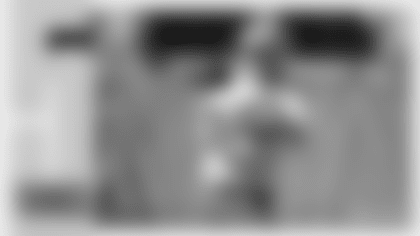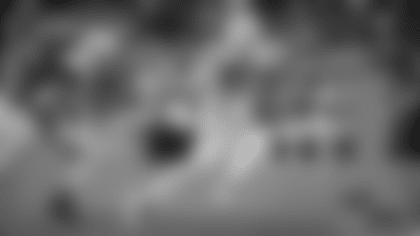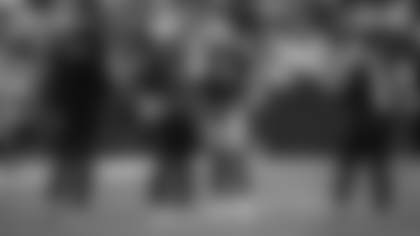The Green Bay Packers have shown some innovation in their passing game this year with their much-publicized "Big Five" formation of five wide receivers, which some liken to a collegiate spread offense.
But the innovative thinking, and old-school college look, extends to the running game, too, with their two-fullback set, which can best be described as an inverted wishbone.
The Packers employed that so-called full-house backfield, with fullbacks John Kuhn and Korey Hall split wide behind quarterback Brett Favre and in front of halfback Ryan Grant, more in the NFC Divisional playoff victory over Seattle than in any other game this year. It wasn't the primary reason Grant ripped off a franchise playoff record 201 rushing yards and three touchdowns, but it was a legitimate weapon in the snowy conditions.
"It was going to be a running back's game with the snow and everything," Kuhn said. "That's the main reason we did that.
"We're just trying to create holes for Ryan to get through. That's about it. Normally there's one fullback in there, now there's just two."
Indeed, the alignment is in essence an I-formation, but rather than having one fullback lined up directly between the quarterback and halfback, there are two. They're split to either side, so including the quarterback, the four players in the backfield form a diamond shape behind the offensive line.
According to Hall, his and Kuhn's responsibility is to get through the line to block on the second level of the defense. Just as linebackers are generally more athletic than defensive linemen, fullbacks are athletically a notch above offensive linemen, giving them a better chance to react to and neutralize attacking linebackers.
"It enables us to get a better match-up as far as a physical standpoint," Hall said. "We're the same type of guys, fullbacks and linebackers, so they like to match us up."
Another advantage is the formation allows the offense to disguise just a tad longer which direction the play is going. In a straight I-formation, the middle linebacker is keying on the fullback and reading which gap he's leading the halfback through as he charges forward.
But with two fullbacks blasting ahead, the linebackers can't know for sure which way the halfback is going until he actually takes the handoff.
"It's a balanced formation, so right or left they really don't know," Hall said. "Self-scout will tell you that most of the time we do run the ball out of it, so they kind of have an advantage there, but they really don't know if we're going to run right or left."
By the time the halfback has the ball and makes his first move, the hope is that both fullbacks have good angles to block linebackers, one straight-up on the play side and the other throwing a cut-block on the backside. It's then up to the halfback to find the best running lane.
"It's a little different, something you don't really see that often, but we have confidence in what our two fullbacks can do lining up, and across the board guys have been playing great," Grant said. "They can move bodies and get that push for me."
Kuhn said he and Hall get a charge out of being on the field together, because fullback is normally a one-man job. And because the look is unusual, most defenses they face are reacting to it for the first time. Their only preparation is to study film, and it's not as though there's an extensive archive of it, though the Packers certainly added to it last week.
"I think actually the only other team that even runs it is the Carolina Panthers," Kuhn said. "So yeah, it's pretty neat.
"It's exciting, and we take some pride in it. We want to try to blow some people up and get Ryan all the yards we can."
Considering the success in the snow against Seattle, the formation could prove valuable again this week if predicted single-digit temperatures and sub-zero wind chills hinder the passing game at all.
{sportsad300}The Packers don't just run out of the two-fullback set, though. They actually have two alignments they use with both fullbacks.
One, called "Rhino," is with two tight ends, so the entire formation is in tight to the ball, and it's an option in short-yardage situations. Another, called "Falcon," replaces the two tight ends with receivers split out wide to either side (looking like wings, hence the bird reference) and provides more flexibility to play-action pass.
If it is a pass play, the fullbacks could stay behind to help pass protect, or they might slip out into the pattern. The versatility of Kuhn and Hall make it work.
Plus it's a lot more fun for them than "Big Five," when they aren't even on the field. But those types of change-ups have helped make Green Bay's offense as effective, and challenging to defend, as it's been.
"It's just one of those things where we're trying to get different personnel packages put together to trick up the defense and make it difficult for them," Kuhn said. "I think we've done a good job with all of our personnel groups. The more we can bring out there, the more trouble it puts them in."














